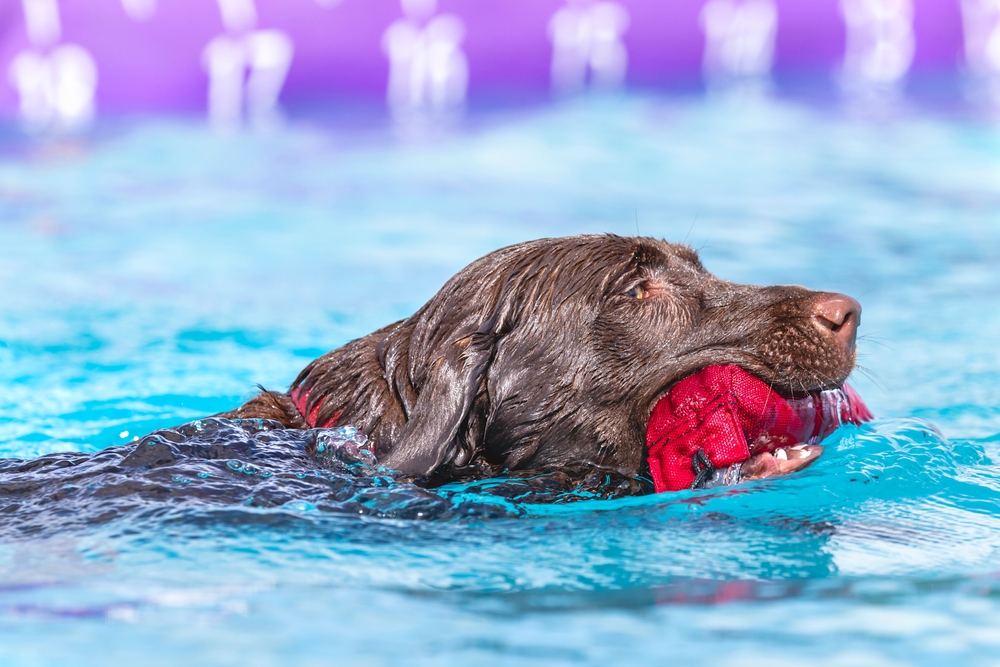Labrador Retrievers are one of the most active and energetic dog breeds. Bred originally for retrieving in water and on land, Labradors thrive on regular physical and mental stimulation. A well-exercised Labrador is not only healthier but also happier, as exercise helps to prevent behavioral issues caused by pent-up energy.
In this guide, we’ll explore the top 10 fitness routines for Labrador Retrievers, tailored to their natural abilities and love for activity. These routines are perfect for keeping your Lab fit, entertained, and mentally sharp.
Why Regular Exercise is Essential for Labrador Retrievers
Labradors are a high-energy breed, and exercise is vital for:
Weight Management: Labradors are prone to obesity, and consistent exercise helps maintain a healthy weight.
Joint Health: Activities that promote movement strengthen muscles and support joints, preventing conditions like hip dysplasia.
Mental Stimulation: Physical exercise combined with mental challenges reduces boredom and destructive behaviors.
Bonding: Engaging in activities together strengthens the bond between you and your dog.
Top 10 Fitness Routines for Labrador Retrievers
1. Daily Walks
Walking is a basic yet essential activity for Labradors.
Duration: 30–60 minutes daily, split into two sessions if needed.
Benefits: Improves endurance, allows exploration, and offers mental stimulation through new scents.
Tips: Use a sturdy leash and vary your routes to keep the experience exciting.
2. Fetch and Retrieving Games
Labradors were bred for retrieving, making fetch a natural and enjoyable activity.
What You Need: Balls, frisbees, or specially designed retrieving toys.
Benefits: Burns energy and strengthens their natural skills.
Pro Tip: Use a ball launcher to increase the distance and give your Labrador an extra challenge.
3. Swimming
Swimming is one of the best low-impact exercises for Labradors.
Where to Swim: Safe lakes, pools, or designated dog beaches.
Benefits: Supports joint health, builds endurance, and is excellent for cooling off in hot weather.
Safety Tips: Always supervise your dog while swimming and consider a doggy life jacket for added safety.
4. Agility Training
Agility courses provide both physical exercise and mental challenges.
Equipment: Tunnels, weave poles, jumps, and A-frames.
Benefits: Enhances coordination, focus, and problem-solving skills.
How to Start: Begin with simple obstacles and gradually increase the difficulty.
5. Hiking Adventures
Labradors love exploring new environments, and hiking provides the perfect opportunity.
Duration: Start with short hikes and gradually extend to longer ones.
Benefits: Builds stamina and exposes them to new sights, smells, and terrains.
Tips: Pack water and snacks for your dog, and choose pet-friendly trails.
6. Running or Jogging
For active owners, running or jogging with your Labrador is a great way to exercise together.
Pace: Start with light jogging and increase speed and distance gradually.
Benefits: Boosts cardiovascular health and helps maintain a healthy weight.
Safety Tips: Avoid running on hot pavement and be mindful of your dog’s pace and energy levels.
7. Scent Work and Nose Games
Engaging your Labrador’s powerful sense of smell is an excellent way to combine mental and physical stimulation.
Activities: Hide treats or toys around the house or yard for your dog to find.
Benefits: Provides enrichment and satisfies their natural curiosity.
Pro Tip: Start with simple hiding spots and gradually make the search more challenging.
8. Tug-of-War
Tug-of-war is a great way to build muscle and have fun with your dog.
What You Need: A sturdy rope or tug toy.
Benefits: Strengthens jaw muscles and provides interactive playtime.
Rules for Safety: Teach your Labrador to release the toy on command to ensure safe play.
9. Dog Sports
Competitive sports like dock diving or flyball are perfect for athletic Labradors.
Dock Diving: Labradors leap into the water to retrieve toys.
Flyball: A relay race where dogs jump over hurdles to retrieve a ball.
Benefits: Keeps them active, mentally engaged, and helps build confidence.
How to Start: Look for local clubs or classes specializing in these sports.
10. Interactive Toys and Games
Interactive toys are excellent for days when outdoor activities aren’t possible.
Examples: Treat-dispensing balls, puzzle feeders, and snuffle mats.
Benefits: Keeps your Labrador mentally stimulated and reduces boredom.
Tips: Rotate toys regularly to maintain interest.
How to Create a Balanced Fitness Routine for Your Labrador
1. Consider Age and Health
Puppies: Focus on short, low-impact activities to prevent strain on developing joints.
Adults: Include a mix of high-energy and mentally stimulating exercises.
Seniors: Opt for low-impact activities like swimming or shorter walks to support aging joints.
2. Listen to Your Dog
Watch for signs of fatigue, such as panting, slowing down, or reluctance to continue. Adjust activity levels as needed.
3. Provide Rest Days
Rest days are essential for muscle recovery and preventing overexertion.
Tips for Success
Start Slow: Gradually increase activity levels, especially for new routines.
Use Rewards: Treats and praise can motivate your Labrador during activities.
Stay Consistent: Regular exercise is key to maintaining fitness and preventing weight gain.
Be Creative: Mix and match activities to keep your dog engaged and excited.
Benefits of Keeping Your Labrador Active
Improved Health: Exercise reduces the risk of obesity, heart disease, and joint problems.
Better Behavior: A well-exercised dog is less likely to exhibit destructive behaviors like chewing or excessive barking.
Stronger Bond: Shared activities deepen the connection between you and your Labrador.
Enhanced Longevity: Regular exercise contributes to a longer, healthier life.







